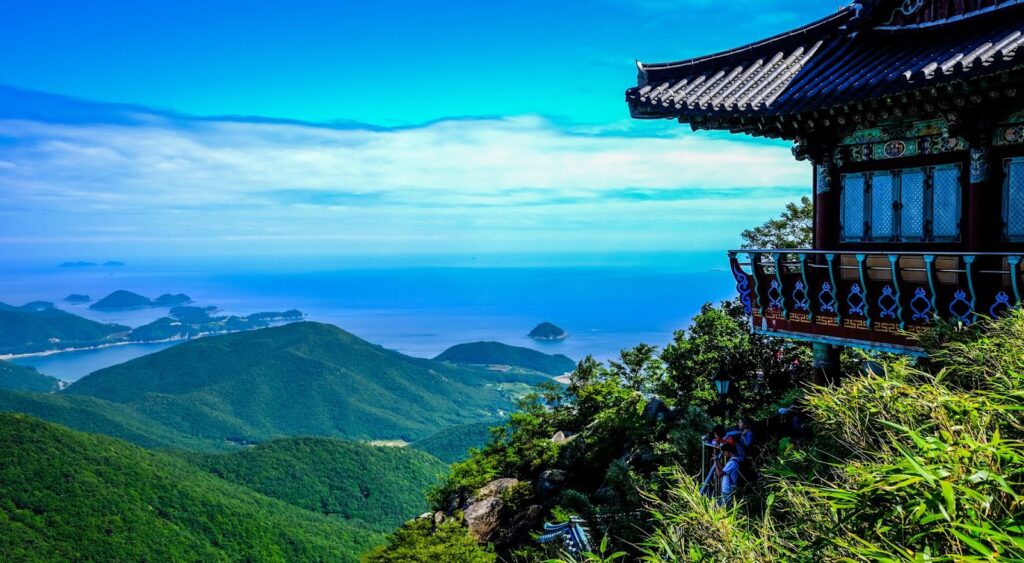South Korea’s charm extends beyond the sunny days. The rainy season, typically lasting from late June to early July and mid-August to September, paints the landscape a vibrant green and offers a unique atmosphere to explore the country. Here are 10 captivating places to visit in South Korea during the monsoon season
Jeju Island: Jeju Island, also known as the “Island of the Gods,” is a volcanic island with a stunning coastline, lush forests, and dramatic waterfalls. The rain enhances the island’s natural beauty, making the waterfalls even more powerful and the greenery even more vibrant. You can also visit the Manjanggul Lava Tube, a UNESCO World Heritage Site, or explore the charming villages around the island.
Boseong Green Tea Plantation: The Boseong Green Tea Plantation is a sprawling landscape of rolling green hills covered in tea bushes. The rain gives the tea leaves a fresh, invigorating scent, and you can take a tour of the plantation to learn about the tea-making process. After your tour, enjoy a cup of steaming hot green tea, a perfect way to relax on a rainy day.
Naejangsan National Park: Naejangsan National Park is a mountainous region with stunning scenery, including waterfalls, temples, and rocky cliffs. The rain creates a mist that hangs over the mountains, making for an otherworldly atmosphere. Hike to the park’s highest peak, Gwaksanbong, for breathtaking views of the surrounding area.
Gyeongbokgung Palace: Gyeongbokgung Palace, the largest of Seoul’s five royal palaces, is a beautiful example of traditional Korean architecture. The rain can make the palace grounds even more serene, and you can take shelter inside one of the palace buildings to learn about Korean history and culture.
Changdeokgung Palace Secret Garden: The Secret Garden, located behind Changdeokgung Palace, is a UNESCO World Heritage Site. It’s a peaceful oasis in the middle of the city, with winding paths, ponds, and pavilions. The rain adds to the garden’s tranquility, making it a perfect place to escape the hustle and bustle of Seoul.
Insadong: Insadong is a traditional Korean neighborhood filled with shops selling everything from hanbok (traditional Korean clothing) to tea sets and handicrafts. The narrow alleys are covered with roofs, so you can wander around and browse the shops even if it’s raining. Be sure to try some Korean street food while you’re there!
Gwangjang Market: Gwangjang Market is a traditional Korean market that’s been around for over 100 years. It’s a great place to try all sorts of Korean food, from kimchi and bibimbap to tteokbokki (spicy rice cakes) and Korean pancakes. The market is covered, so you can enjoy the food even if it’s raining outside.
Namdaemun Market: Namdaemun Market is another large traditional market in Seoul. It’s open 24 hours a day, so you can visit anytime you like. The market is covered, so you can shop for clothes, souvenirs, and other goods even if it’s raining.
Korean Folk Village: The Korean Folk Village is an open-air museum that showcases traditional Korean life. You can see what life was like in Korea hundreds of years ago, and there are also performances of traditional music and dance. The village is built on a hillside, so you can enjoy some beautiful views of the surrounding area.
Everland: Everland is a large amusement park located outside of Seoul. It has a variety of rides and attractions, as well as a zoo and a water park. While some outdoor rides may be closed during the rain, there are still plenty of indoor activities to enjoy.
